Search Posts
Recent Posts
- Rhode Island Weather for June 4, 2025 – Jack Donnelly June 4, 2025
- Sour Grapes time! – Tim Jones (meet Tim at AnimeCon) June 4, 2025
- Lawsuit filed to stop Empire Wind Project by 4 environmental groups and fishermen June 4, 2025
- It is what it is: 6.4.25 – Jen Brien June 4, 2025
- New ALS treatment by PathMaker Neurosystems. Co. funded by RI Life Sciences Hub to come to RI. June 3, 2025
Categories
Subscribe!
Thanks for subscribing! Please check your email for further instructions.
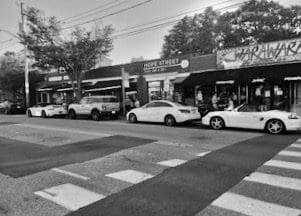
Hope Street: Time to reimagine bike lanes on busy streets. Mayor-elect Smiley listening.
The proposal to study – or conduct a trial – for a potential urban bike trail on Hope Street on the East Side of Providence is set for the first week of October. Data is already being collected with counting cables installed across parts of Hope Street. For the trial week, volunteers have been recruited and assigned to certain locations up and down Hope Street to gather comments, and provide information. Volunteers will be given free t-shirts from Frog & Toad, ordered by PVD Street Coalition. The data is intended to provide guidance for moving forward – or not – with a permanent bike lane on Hope Street, from Tortilla Flats up and past the Hope Street Village, or Merchants area.
The group gathering the study is the PVD Streets Coalition – the bike advocacy group, itself – the group charged with putting bikes all around the city and implementing parts of the Great Streets Plan for Providence. The data collection will not be independently done by a professional group with no vested interest.
RINewsToday, working with veteran correspondent Roger Schreffler, who lives in the area and is challenging the efficacy of the project, has raised the issue of the Coalition’s conflict of interest with two of the mayoral candidates who lost in the Democratic primary last week, Nirva LaFortune and Gonzalo Cuervo. LaFortune still sits on the Providence City Council, until January, when the Council successors are sworn in. LaFortune represents Ward 3, where the street trial will be conducted.
We have also reached out to the mayor’s office, which hasn’t returned our calls, and AARP Rhode Island, which is providing funding for part of the trial.
One issue that has been raised to AARP-Rhode Island is that eliminating approximately half of the parking in the area is not senior friendly or conducive to those with physical disabilities, both minor and major but especially those who use various “assist” devices that must be removed from the vehicles they are in, such as walkers, canes or wheelchairs.
New Event Planned to “Reclaim our Streets”
Last Friday, the group put a notice out in certain venues such as Facebook inviting people to attend a “film event” on October 6 at Festival Ballet, a cultural institution on Hope Street, where it will showcase a documentary called “The Street Project” and host the director who, according to the notice, wants to “reclaim our largest public spaces – our streets.” The Coalition also announced that Providence Mayor Jorge Elorza, the driving force behind the city’s “urban trails” project is said to be making opening remarks at the film event. Mayor-elect Brett Smiley has also been extended an invitation to attend the Festival Ballet film event. Our understanding is that Smiley hasn’t responded to the Coalition yet. But the incoming mayor has expressed reservations about both the project and the trial, and has indicated he will look at bike trails on roads in Providence as a whole.
Debuting the film during the week’s trial is questionable tactics in any “independent study”. The trial runs Saturday, October 1 to Saturday, October 8.
PVD Streets Coalition
We reached out to Liza Burkin, an activist who identifies herself as the “lead organizer” at the Coalition, for comment. Burkin didn’t respond despite the fact that she’ll be administering the trial. In total, RINewsToday has emailed Burkin 13 times, since the project was first announced, seeking more details, never to receive a response.
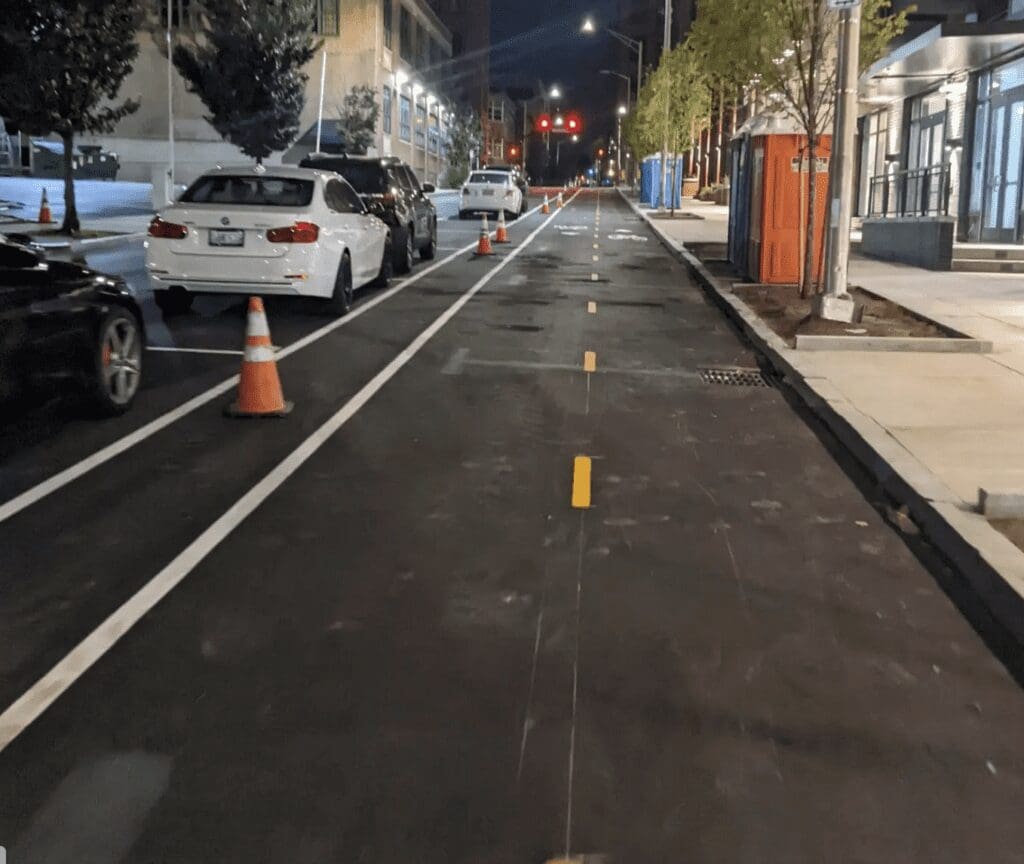
Already tested, already failed
While much detail goes in to planning for and implementing “trials” of on-road bike lanes, with the hiring of community advocate workers, mailings, meetings, etc., little is done after a bike lane is installed to measure its effectiveness or tweak problems with it.
The Coalition has been involved in the failed bike trail on Eaton Street, along the side of Providence College. Working without neighborhood support, over $75,000 was spent to install the bike lanes – and less than 6 weeks later, $75,000 was spent to remove it after neighbors and college officials complained how unsafe it was making any kind of transportation on the street.
A trial in East Providence resulted in an abandonment of their bike lane project.
Other bike path areas the Coalition is looking at or has already done include Broad Street, South Water Street, North Main Street and Allens Avenue.
The Broad Street bike lane is under scrutiny, with nearly no one using it, comments about how unsafe it makes it for pedestrians coming out of stores or attempting to cross the street with e-bikes, and skateboards “zipping down the lane at a high rate of speed”. Even avid bikers are noting its unsafe conditions. Sent to us were a series of photos on Broad Street taken over time to show nearly no one using them:
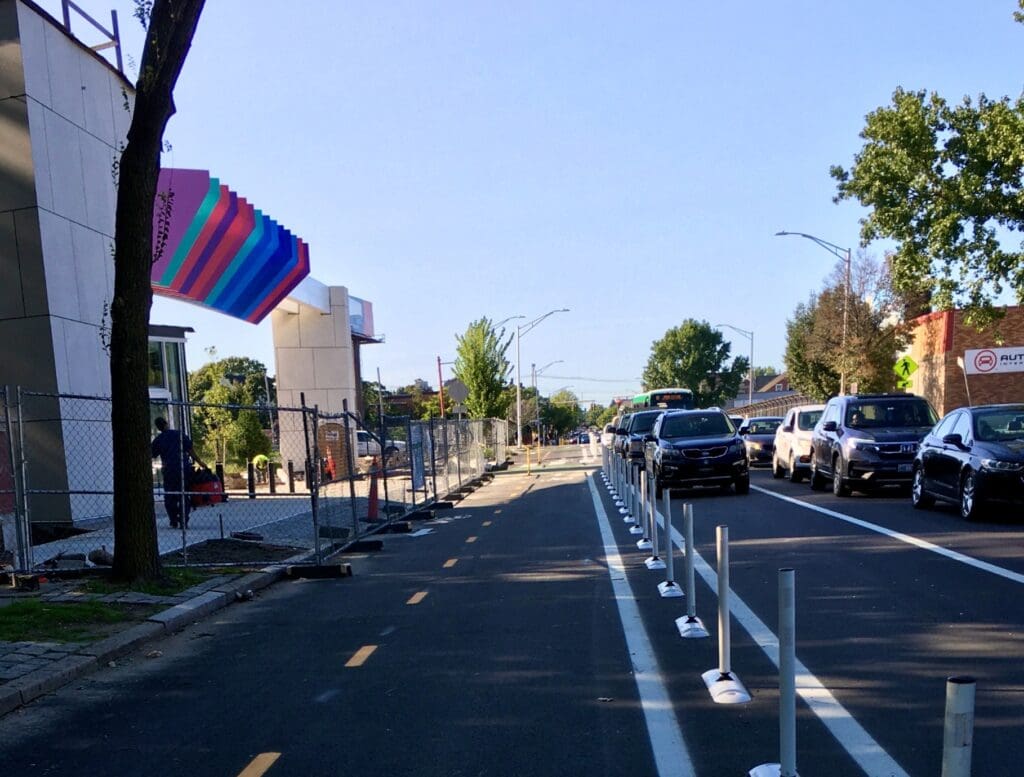
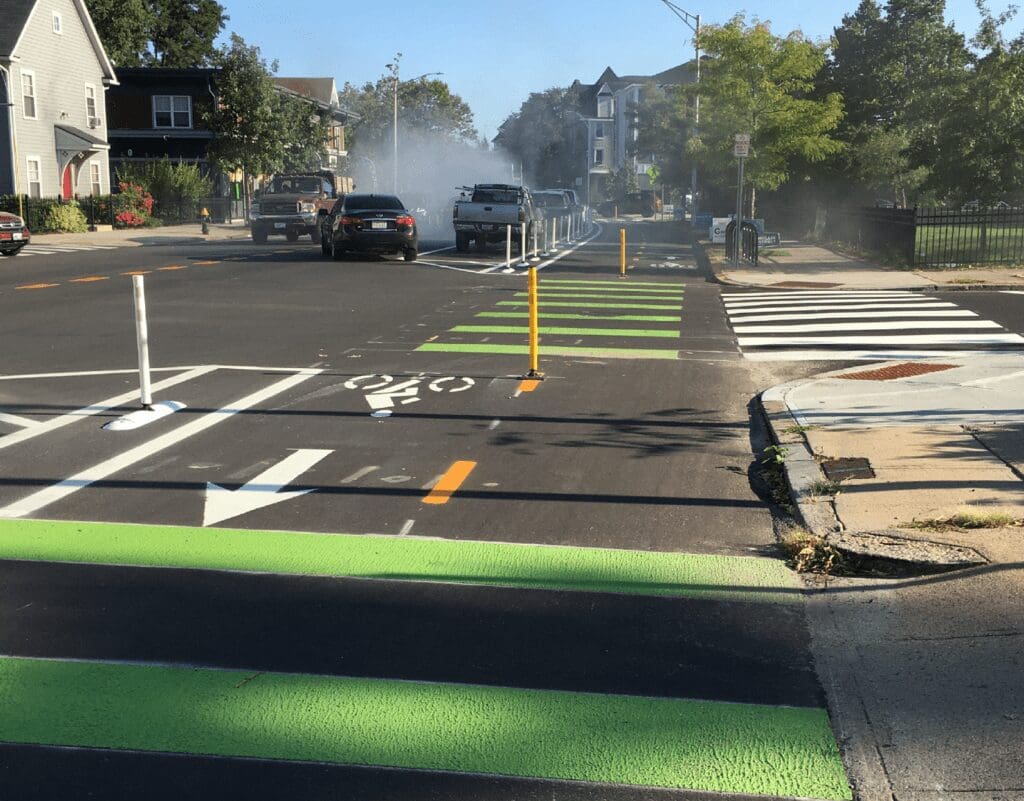
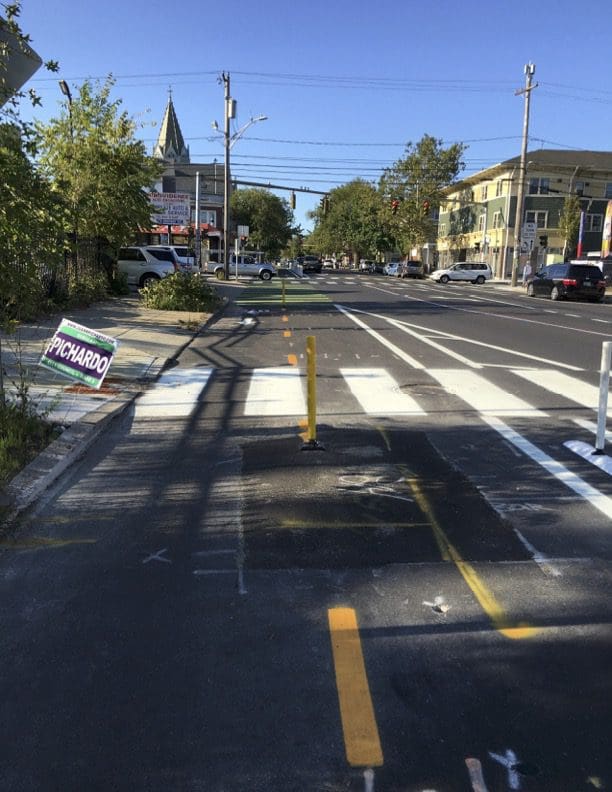
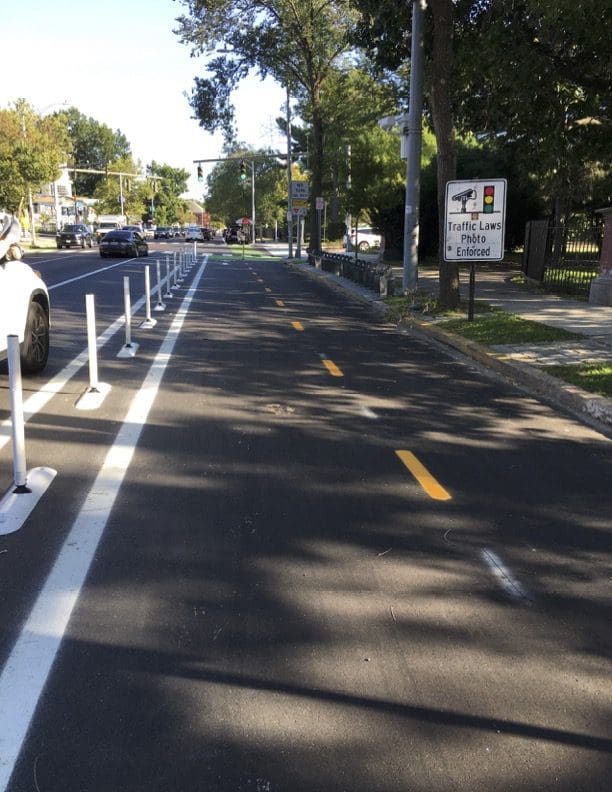
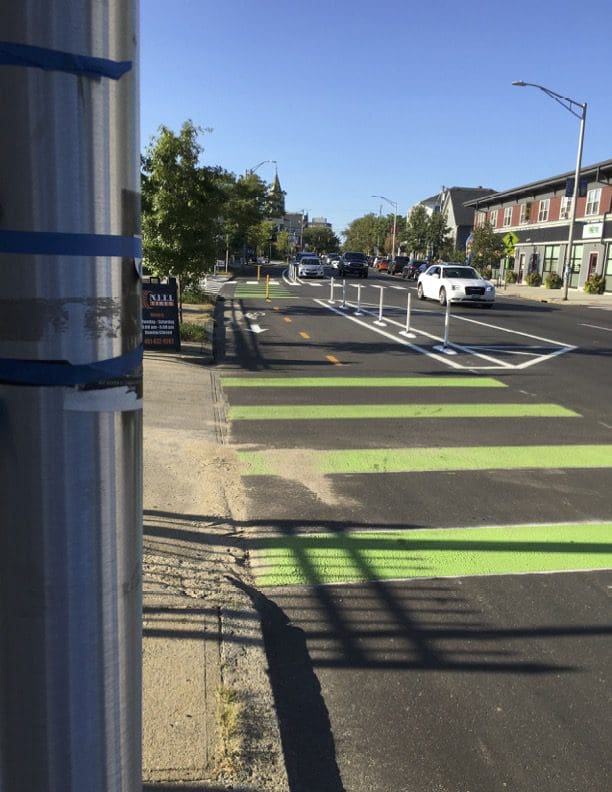
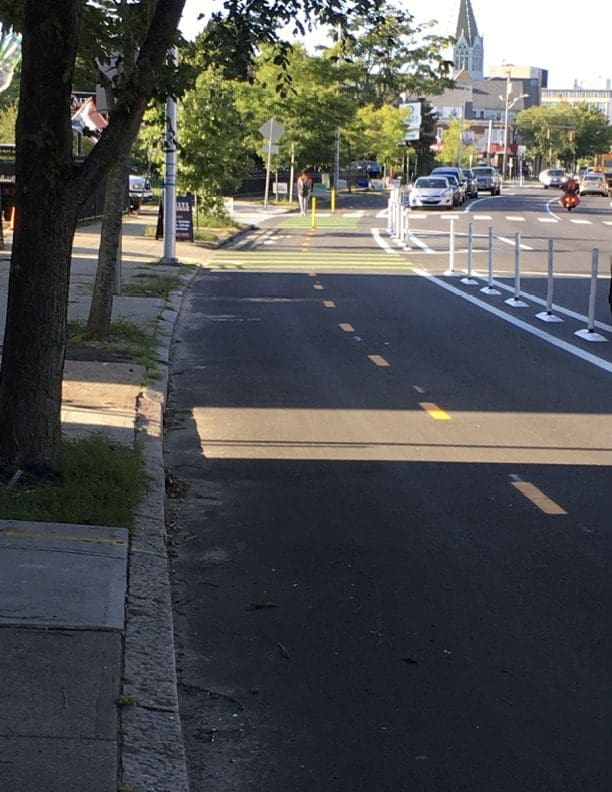
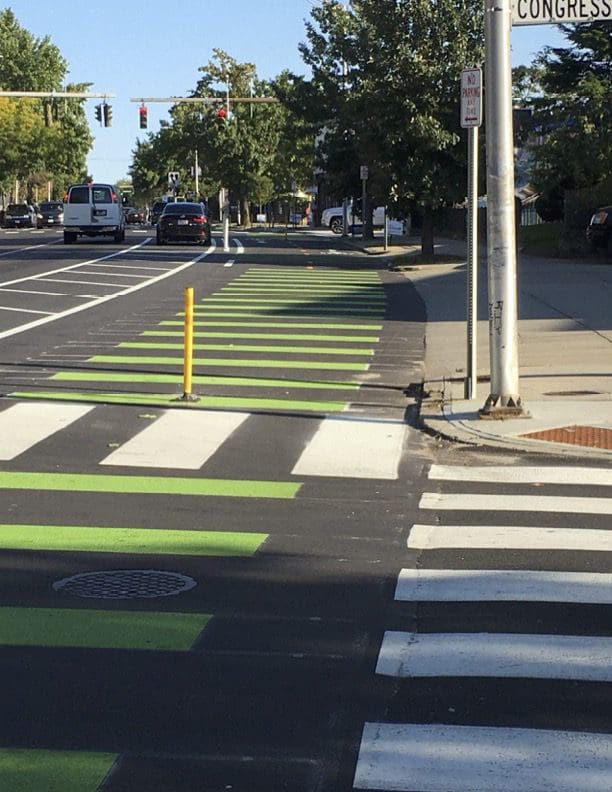
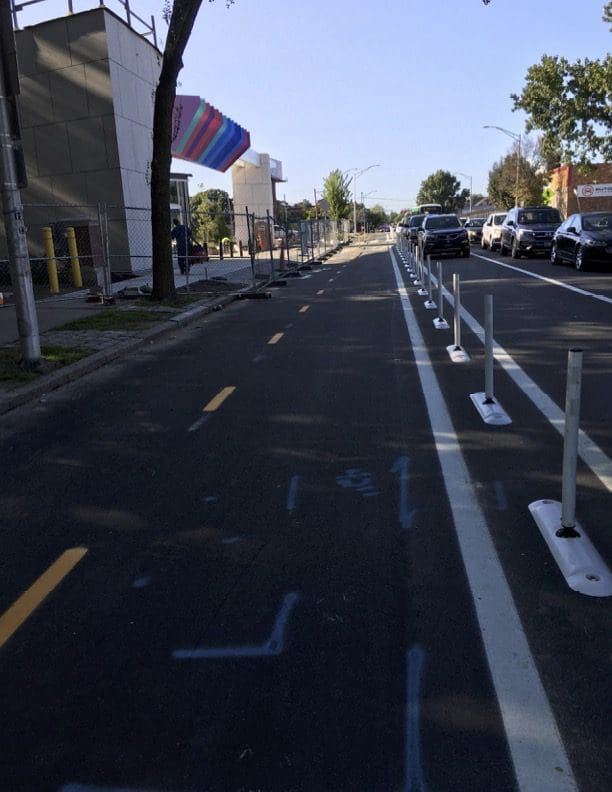
Mayor-elect Brett Smiley
Mayor-elect Brett Smiley has also been extended an invitation to attend. Our understanding is that Smiley hasn’t responded to the Coalition yet. But the incoming mayor has expressed reservations about both the project and the trial, and has indicated he will look at bike trails on roads in Providence as a whole.
The Mayor spoke to Gene Valicenti in an interview – his interview, below, followed his statement to RINewsToday that he “would take the feedback of all the people involved—business owners, local residents, drivers and cyclists—and be willing to modify the plans to reflect that feedback if it turns out that the plan doesn’t work or if we need to make changes to it.” He added, “As for the trial, we can expect a convergence of bike riders onto Hope Street, which will, it is unavoidable, raise questions about the data. Since I wasn’t part of the original decision process, I’m more interested in community feedback.”
To hear Smiley speak on the bike path projects advance to approximately 7:10 at the link below the photo, here:

Listen here:
https://omny.fm/shows/the-news-with-gene-valicenti/09-15-22-providence-mayor-brett-smiley
___
Smiley said on radio, “Real cities have bike paths and Providence can too,” adding: “I think we need to think more thoughtfully about bike paths in Providence…One thing different than I think the current administration is, I am willing to hear feedback that might be contrary to what my plans are. “And if the business owners and residents don’t want it, we won’t move forward because it does seem like it’s been full steam ahead regardless of the feedback.”
Click on the red arrow to listen to the interview:
What the community says
Clearly, the most important impact in dollars and cents will be for the small businesses that dot the Hope Street Village and beyond. Feedback from many residents is that the Hope Street business owners oppose the bike trail and trial. On August 22, more than 20 of them wrote a letter to the Mayor, Jorge Elorza, the Providence Planning and Development Department and the Providence City Council, asking that the city reconsider the wisdom of a bike path in what is already a congested, busy roadway. RINewsToday has been sent copies of other letters that businesses have set separately, all surprised to have no response. The August 22nd letter expressed skepticism of any data “compiled and presented by agenda-driven volunteers” and said that going forward, if we must, we call on city officials to require that any data gathered and used be collected by a neutral third party.”
The merchants further commented: “We are dismayed at the lack of transparency surrounding this project. For instance, how and why was the Providence Streets Coalition given permission to co-opt a busy commercial street even for a week for this trial?”
They added: “This project is not being planned ‘with’ us as advertised, but ‘despite’ us.”
Parking
Photographs taken by RINewsToday of the parking situation on both Hope Street and the side streets around the business district show a greater rate of parking occupancy than stated by the Providence Streets Coalition, which reports, “The highest occupancy rate at the busiest time (Saturday afternoon) is 35%…”




The occupancy rate we found in our unscientific look-see seems more than 90%, sometimes approaching 100%, in the blocks between Lauriston Street and Rochambeau Avenue, which comprise the center of the business district. Regardless of the percentage, getting a parking spot on Hope Street during key times of the day to go to a restaurant or shop, is always a challenge, by any measure.
RIPTA Conga Line
With Hope Street being so narrow, already, buses will not be able to pull over to pick up people at the edge of the sidewalk, so traffic will line up, conga-line-like, with no one getting around them.
First Responders – police, fire, rescue
Several first responders spoke off the record saying that they avoid Hope Street as it is now because of how dangerous it is to travel at a higher rate of speed with no way for cars to pull over, and high pedestrian use. Entrances to Miriam Hospital are off this area, usually accessed by Hope to 4th to Summit.
Lippitt Park
One of the problems with the great advantage of the farmers’ market and other events held at Lippitt Park has been parking – neighbors in the surrounding areas often put chairs or orange cones in front of their driveways to block cars who park and block them in, or out. Removing even more parking spaces would make neighborhood parking worse.
Senior Friendly?
Separately, RI News Today has confirmed that neither the city nor the state nor the AARP has data about how the project might impacts seniors in Ward 3. The state’s Office of Healthy Aging (formerly the Rhode Island Division of Elderly Affairs) was not aware of the situation that has been raised.
Transparency
The AARP has refused to share the Coalition’s application so that we can see what if any data was included and what the funds of $12,574 are to be used for. The PVD Streets Coalition and city Planning and Development Department have also refused to provide details about who the other funding sources are, but did confirm that there are others.
Tim Rondeau, director of communications and external affairs for the department, said his team had no input in drafting the questions used by the PVD Streets Coalition for an “online” survey conducted last November and delivered to select residents in the ward by way of postcards in mailboxes.
A majority of streets in Ward 3 were not surveyed. Moreover, the survey did not go out in the city’s name.
We have also requested a copy of the AARP proposal from Nirva LaFortune.
Other sponsors, from our research, appear to be 3M and Spin, the latter one of the electric bicycle and scooter sharing companies doing business with the city of Providence.
We also reached out to Grow Smart Rhode Island, which, according to John Flaherty, Grow Smart’s deputy director, is the “fiscal sponsor” for the Providence Streets Coalition. Flaherty said any questions about why the city chose an advocacy group to conduct and oversee the Hope Street project should be directed to the city.
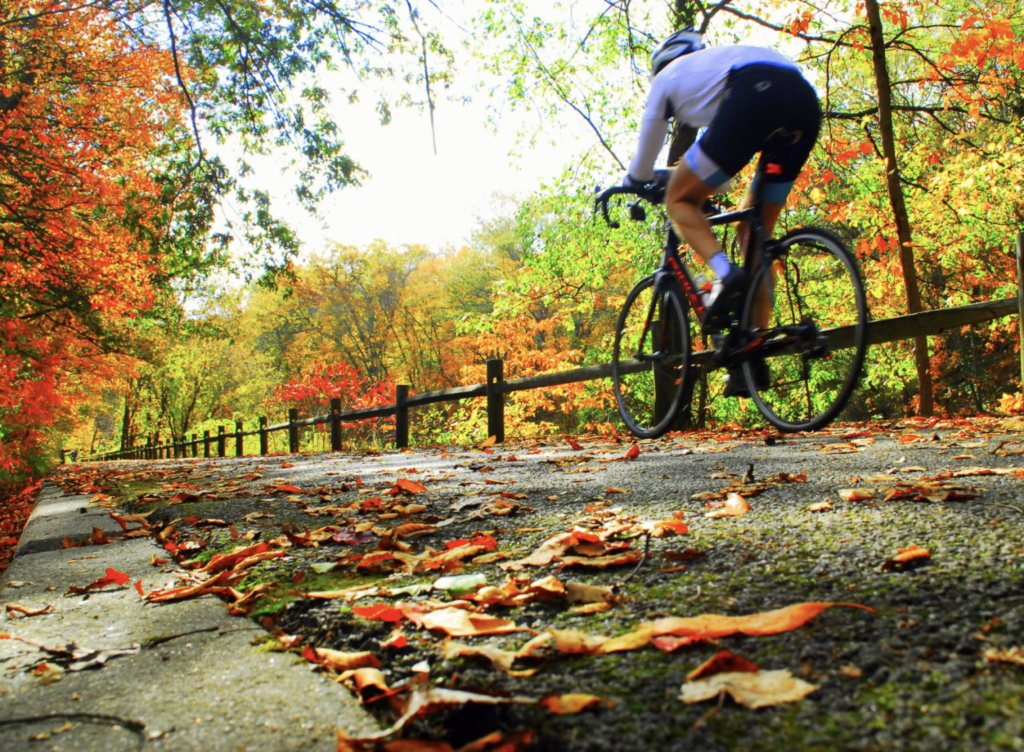
$6.6M to improve Woonasquatucket, Washington, East Bay Bike Paths – recently Sen. Jack Reed announced federal funds coming into Rhode Island to improve 3 protected bike paths – the East Bay Bike Path, the Washington County Bike Path and the Woonasquatucket Bike Path. These bike paths are “off-road” and popular with bike lovers and walkers, especially on the weekend. The paths close at sundown for safety purposes as they are not lit and can be rather remote and not visible by others.
A Community Meeting TOMORROW
Nirva LaFortune plans to hold a town meeting at the Rochambeau Library on Thursday, September 22. She held an earlier meeting, with more than 50 in attendance, on July 18. Some store owners say they never knew about the July meeting and never received notice.
To read other articles done by RINewsToday on various bike lane projects go to: https://rinewstoday.com/?s=bike+lanes
___
This is a developing story

Without a protected bike lane, bicyclists should ride directly in the middle of the road where they have more visibility and it’s safer. Statistically, it’s far more dangerous for bicyclists to hug the right side of the road riding closely by parked cars. They’re more likely to get doored or hit by a passing car or driver turning in front of them. To deter aggressive drivers and have evidence to report to law enforcement, bicyclists should wear a helmet with a 360-action camera mounted on top.
When bicyclists ride on sidewalks, they increase the risk of injury to themselves or pedestrians. Because of many hazards that can get in the way of bicyclists, it’s actually more dangerous to ride on the sidewalks.
Drivers need to always be aware of bicyclists and slow down for them. When passing a bicyclist, drive 15 mph and give 5 feet of space between your vehicle and the bicyclist. Drivers are obligated to always drive with care and be prepared to slow down and stop for pedestrians who are in the crosswalks.
Although Rhode Island lacks the proper infrastructure for pedestrians and bicyclists, change starts with getting out there and doing good for the community and our planet. Be sure you’re seen and heard.
Latest trend in some cities/states if biker education and licensing, mandatory helmets, and insurance.
At age 68, I also cycle both for pleasure and transportation whenever I can. I’d also like to advocate for an interconnected, city wide bike infrastructure. I hear over and over again from cyclists that they are afraid to bike on the city streets because they do not feel safe. Getting folks to bike in the city is currently a chicken and egg problem… until there is sufficient, connected bike infrastructure you won’t see lots of folks riding their bikes and because the non-cyclists don’t see anyone (they are less likely to notice bikes anyway), they keep saying that it isn’t needed (though you do see many more young people riding bikes, not to mention folks who can’t afford cars).
We have lessons from cities around the world where car traffic has been reduced dramatically once they installed sufficient infrastructure to support bicycles. And with today’s electric assist bikes, the ability to dramatically reduce our dependency on fossil fuels, which are killing our planet and to which we have extremely limited time to act before it is too late for our grandchildren, is before us.
Transportation is the largest of the contributors to greenhouse gas emissions.
I am concerned that this article expresses opposition to the bike lane and not a balanced viewpoint, so as a cyclist, I wanted to add a different perspective.
Bike lanes belong on busy streets, since they are needed to keep everyone safe. For instance, when we bike on Hope St. now, we have a choice of biking in the parking lane if there are no cars, and returning to the street if there is a car parked, or biking in the street and slowing down the traffic. There are drivers who come too close to our tandem bike regularly, and once actually sideswiped us (they lost their rear view mirror and keep going, luckily we were unharmed). On side streets, traffic is slower and sharing the road is more practical, since there is less space. However, they usually don’t go as far, so to get from point A to point B, Cyclists do need to bike on Hope.
My husband and I are 70 and 71, but we are also concerned about younger cyclists, including kids. Bike lanes would make it possible for some kids to bike to school, for instance.
Everywhere there has been a bike lane, there has been opposition. That is understandable, since change is hard. I would ask everyone to listen to each other’s concerns and see if there are solutions rather than oppose the whole idea.
When we bike on city streets, we get very positive feedback from individuals we encounter, regardless of where we are. I believe the residents as a whole support cycling but may not all appreciate the need for bike lanes to allow cyclists to safely navigate the city.